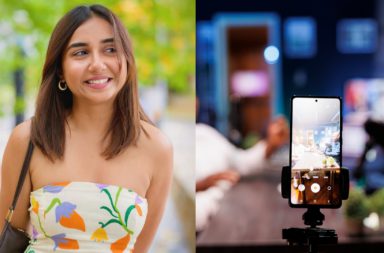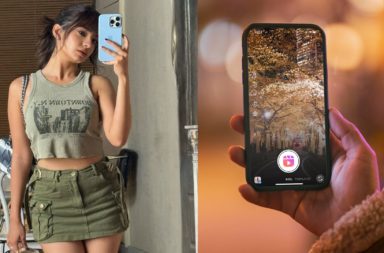It’s been 17 years since YouTube started. It was launched on February 14, 2005, by Steve Chen, Chad Hurley, and Jawed Karim. The streaming platform that is owned by Google, wrote in its blog how there have been seven great innovations on the platform in seven years, namely- Fan funding, YouTube Shorts, premiers, YouTube TV, YouTube Music, YouTube Kids, and Digital wellbeing. These seven aspects speak plenty about the platform’s updates and more about
1. Fan funding

YouTube recognized creativity should be rewarded and helped spark and build the creator economy into what it has become today. They now have 10 ways for creators to make money, with fan funding at the heart of viewer support for creators. This initiative that started in 2017 with the launch of Super Chat has since expanded to Super Stickers and Super Thanks, allowing fans to connect with creators and show their appreciation through one-time payments. Channel memberships also arrived in 2017, giving fans exclusive access to custom perks and content for a monthly fee that creators set. Last year, more creators earned money from these non-ads products than ever before.
2. Shorts

YouTube Creators can connect with their community with the right content at the right time by using a range of video formats, from video on demand, to live, to shorter-form Clips and Shorts. We introduced Shorts in beta in India in the fall of 2020, and now Shorts is available in over 100 countries with over 30 billion daily views, a four-fold increase from last year! “We’ve introduced new ways for people to remix content, such as Green Screen and Cut so that anyone can put their own spin on the content they love on YouTube, and to help creators make money on their short-form content, we’ve launched the YouTube Shorts Fund while we work on a long-term monetization model for Shorts. Aside from building a creator’s community, Shorts can also increase channel memberships.”, wrote YouTube. They are also working towards making Super Chat into shorts and bringing the shop future to the shorts.
3. Premiers
As YouTube brought the world together during the pandemic, Premieres played a vital role. This feature has been a favorite of creators, who used it to draw fans from around the world by building anticipation for a new video or live stream. From Andrea Bocelli’s concert at Milan Cathedral to popular gamer Dream’s monthly videos, Premieres helped viewers program badly needed entertainment and education.
In May of 2021, K-pop group BTS set an all-time 24-hour record of 108.2 million views when their official Butter music video was released on YouTube.
YouTube introduced this industry-leading tool in 2018, and two years later, Premieres has become more premier by adding further ways to build engagement through Live Redirect, Trailers, and Countdown Themes.
YouTube Premium-exclusive afterparties are also a hit, which bookends events with Premieres and lets Premium members engage in real-time with artists who host a video feed and live chat. Recently, we also expanded Premieres’ Live Redirect feature, which lets creators redirect their audiences to other channels’ live streams and premieres, allowing for easier, more accessible collaboration among creators and their communities.
Also Read: Alanna Panday’s ruling Y2K Fashion!
4. YouTube TV

YouTube TV came into existence around 5 years ago. With YouTube TV, we can watch live TV on the go. And we can do it on all our devices — with unlimited DVR storage, channels viewers love at an affordable price, and without fixed commitments and equipment fees.
YouTube TV was built on the promise that fueled YouTube: Design a service that makes it simple for viewers to find great content and fill it with lots of great features to elevate that experience. Since YouTube TV launched, its leading DVR has been joined by other cutting-edge features, from Key Plays and Stats to 4K content, offline DVR viewing, unlimited streams in homes and 5.1 Dolby audio.
5. YouTube Music + Premium
While YouTube was initially designed for watching, fans also come to the platform to listen to their favorite songs and search for new music. The YouTube Music app came in 2018 to make it easier to explore and personalize music, while also allowing viewers to toggle seamlessly between audio and video. And to give users even more choice, they launched YouTube Premium for an ad-free, background, and offline experience on both YouTube and YouTube Music.
Now available in over 90 countries and regions, YouTube Music is home to a catalog of 100 million tracks, as well as playlists, remixes, live performances, and hard-to-find recordings. Along the way, various features were added to make the listening experience more dynamic and immersive, such as personalized My Mix playlists/activity bars, year-end reports on fans’ listening, and shareable year-in-review playlists.
6. YouTube Kids and supervised experiences on YouTube

There is nothing more insatiable than a child’s curiosity, and to help them explore and learn about the world more safely, they launched YouTube Kids in 2015. Parental controls in the app and — most recently, parental sharing of videos and channels from the YouTube app let parents customize their children’s viewing experience. They also provided
They have also focused on giving more choices with supervised experiences for parents who have decided their tweens and teens are ready to explore even more on YouTube as they gain more independence. This experience comes with three different content settings, limited features, and digital wellbeing protections.
7. Digital wellbeing

YouTube appreciates that there’s a delicate balance that must be met between watching and well-being and that this balance is not the same for every viewer. Our digital well-being initiatives are central to our vision for responsible growth. That’s why over the last few years, we’ve developed features like bedtime reminders, time watched profile, scheduled notification digest and others to help people manage their screen time.
Neal Mohan, the Chief Product Officer of YouTube said, “When I look back at how YouTube started in 2005, I’m always amazed at how far we’ve come. Over the years, our teams have worked to enrich the experience for both viewers and creators — based on feedback from our community and all the creative ways they use the platform. In the last seven years, we’ve introduced key product developments to make content more accessible, interactive, and safer for our community. And as diverse as they seem, these products and features share one thing in common: They make it possible for viewers to connect more deeply with the content and creators they like.”
In the past seven years, we don’t look at YouTube as just a static collection of content. Our teams are always looking for new ways to bring this content alive, help forge connections and community for viewers, and give creators new ways to support their ambitions as entrepreneurs, wrote YouTube.


